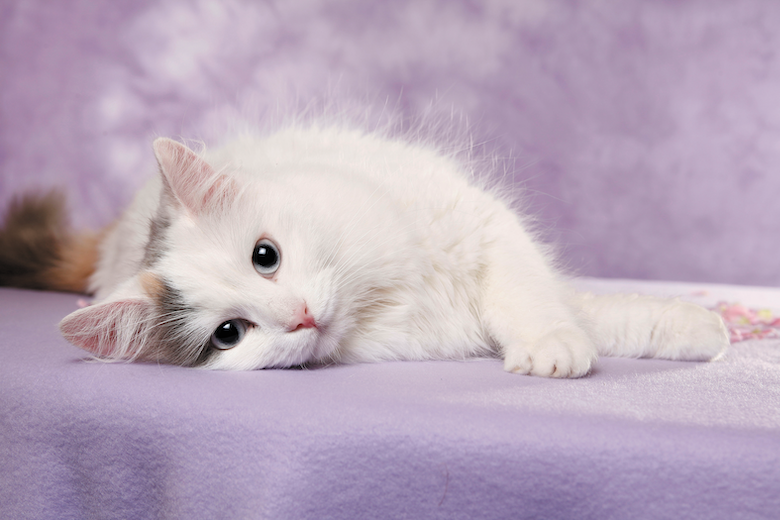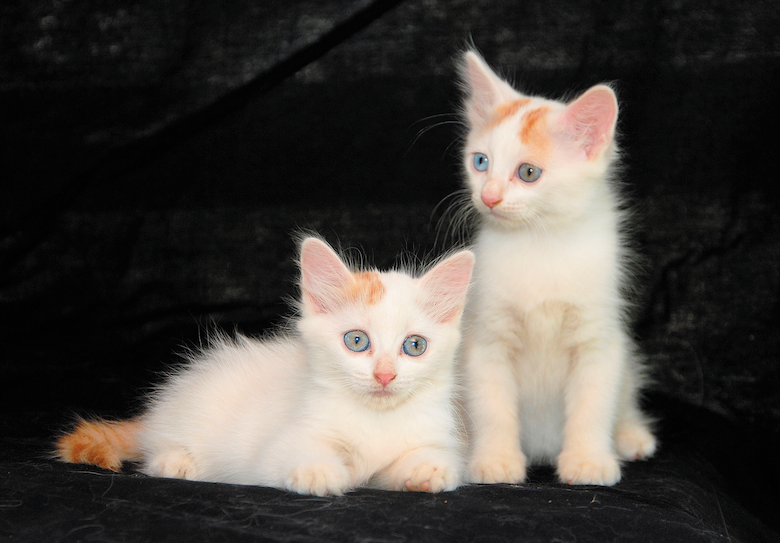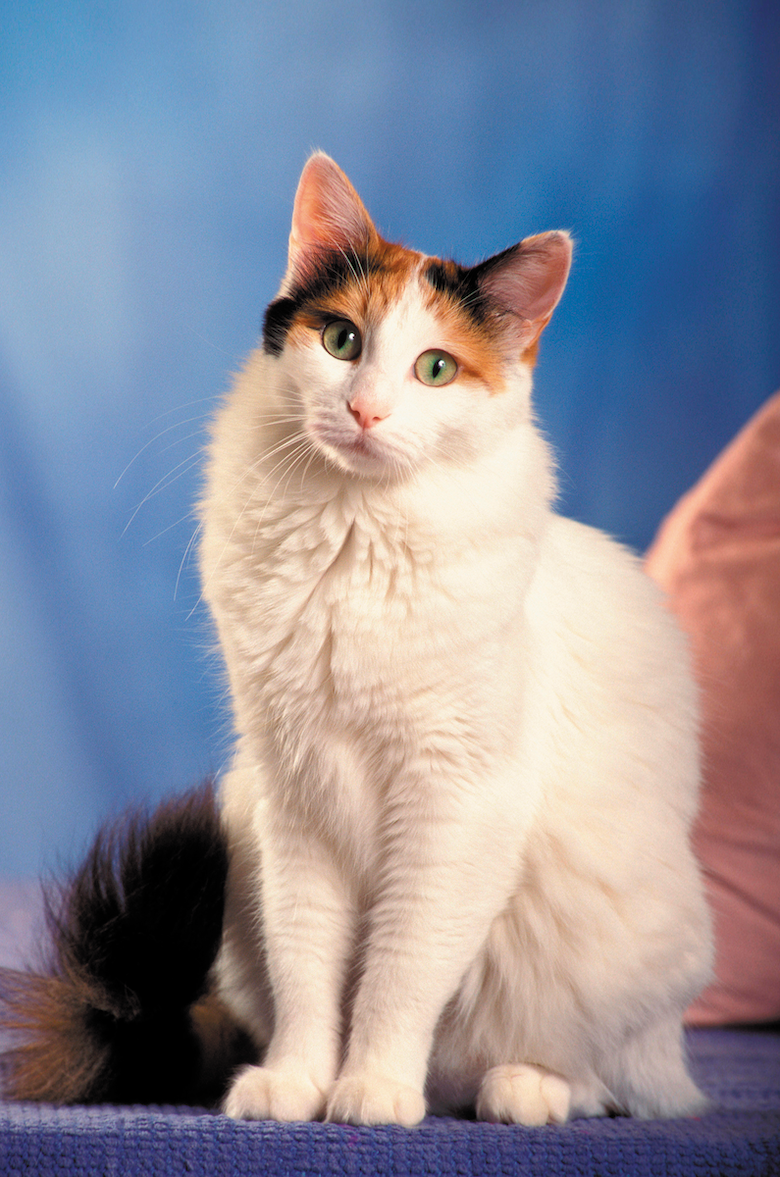Turkish Van
The post Turkish Van by Stacy Hackett appeared first on Catster. Copying over entire articles infringes on copyright laws. You may not be aware of it, but all of these articles were assigned, contracted and paid for, so they aren't considered public domain. However, we appreciate that you like the article and would love it if you continued sharing just the first paragraph of an article, then linking out to the rest of the piece on Catster.com.
One of the oldest breeds in the fancy, the Turkish Van has enchanted and enthralled cat lovers for thousands of years. A native of central and southeast Asia, the breed is most commonly associated with the Lake Van region of Turkey, where it is considered a national treasure. People love the breed so much that the cat also has become a favorite in Europe and the United States, garnering acclaim for its distinct pattern and lively, friendly nature.

Photo: Alamy
Busy breed
“The Turkish Van has many exceptional personality traits,” says Erica Tadajewski, a breeder from Michigan. “One is the way they are so in tune with people and want to make them happy.”
As Erica explains, the Turkish Van forms deep attachments to her favorite people — and those favorites are not always the members of their own home. The cat shows her love through affectionate attention. In other words, a Van that loves you will likely stick close by your side, climbing into your lap to kiss your cheek or curl up for a nap.
The cat hopes for plenty of attention in return. “The owner of the Turkish Van must be someone who wants an interactive cat,” Erica says.
This very busy breed thrives on activity. The Van has an intelligent, curious nature that leads her to investigate all the nooks and crannies of the house, especially those in high places. Interactive play is one of the cat’s favorite pastimes. For example, the Van will play fetch for as long as she can convince you to throw the ball.
If left to her own devices without a playmate, however, the cat will come up with her own activities — ones that her owners may not appreciate! For that reason, the Van typically does best when she has many toys and/or a buddy to play with.
The Turkish Van also has developed a reputation as a cat who loves water. As the breed evolved over the years in her native country, she likely learned to hunt for fish in the local streams and rivers, and may have learned that a quick dip in the water was a good way to cool off. And while the Van may not seek out a pool to cool off these days, many owners report that their Vans seem to enjoy the water during bath time.

Photo: Alamy
Amazing appearance
An active lifestyle full of running, jumping and climbing (and perhaps a bit of swimming) contributes to the Turkish Van’s muscular body type, which Erica compares to that of a swimmer.
“Their very broad chest is wider than the hips, that taper off to almost nothing, like a muscular swimmer’s body,” she says, noting that the cat typically develops impressive, heavy hindquarters. “They are heavier than they look. When you pick them up [for the first time], you are not expecting the weight you just lifted.”
In fact, though the breed can take from three to five years to fully mature, full-grown male Vans can weigh more than 20 pounds, while adult females can reach 15 pounds. Both young cats and adults enjoy good looks enhanced by high cheekbones, expressive eyes and a large, brush-like tail.
The crowning touch to the Turkish Van’s appearance is her soft, semi-long coat. “When you touch one, nothing can describe the soft cashmere texture,” Erica says.
And then there’s the immediately recognizable “van” coat pattern, with color appearing almost exclusively on the cat’s face and tail (a few small spots on the body are allowed in the breed standard). While the Turkish Van’s body and legs remain almost pure white, the tail and face can show a range of colors including pure white, red, cream, tortoiseshell, dilute tortoiseshell, black, blue, black tabby, blue tabby, torbie and dilute torbie. The cat’s eyes can be amber, blue or odd (one of each color).
As a long-haired cat, the Turkish Van needs occasional grooming attention, but nothing excessive. “A brushing once a week is enough; in spring and fall you may increase this a bit,” Erica says.

Photo: Alamy
Van history
The unique appearance of the Turkish Van helped the cat make her way to the United States, with a first stop in England. “In 1955, while photographing Van Lake, British citizens Laura Lushington and Sonia Halliday became fascinated by the beautiful Van cats of the area,” Erica explains.
Lushington received a pair of Van cats from the Turkish Tourist Board and began a breeding program when she returned to England. The Turkish Van became a fully recognized pure breed in England in 1969, and the first Van kittens arrived in the United States in the 1970s.
Through the hard work of many dedicated breeders, the Turkish Van was accepted for championship status in The International Cat Association in 1979 and in the Cat Fanciers’ Association in 1994. Since then, interest in the breed has steadily increased, though the Turkish Van remains a relatively uncommon breed.
If you are lucky enough to welcome a Turkish Van into your home, prepare for many years of enthusiastic affection from this sweet, inquisitive, beautiful cat. The lovely breed has spent hundreds of years evolving into the ideal pet she is today.
The post Turkish Van by Stacy Hackett appeared first on Catster. Copying over entire articles infringes on copyright laws. You may not be aware of it, but all of these articles were assigned, contracted and paid for, so they aren't considered public domain. However, we appreciate that you like the article and would love it if you continued sharing just the first paragraph of an article, then linking out to the rest of the piece on Catster.com.




Post a Comment